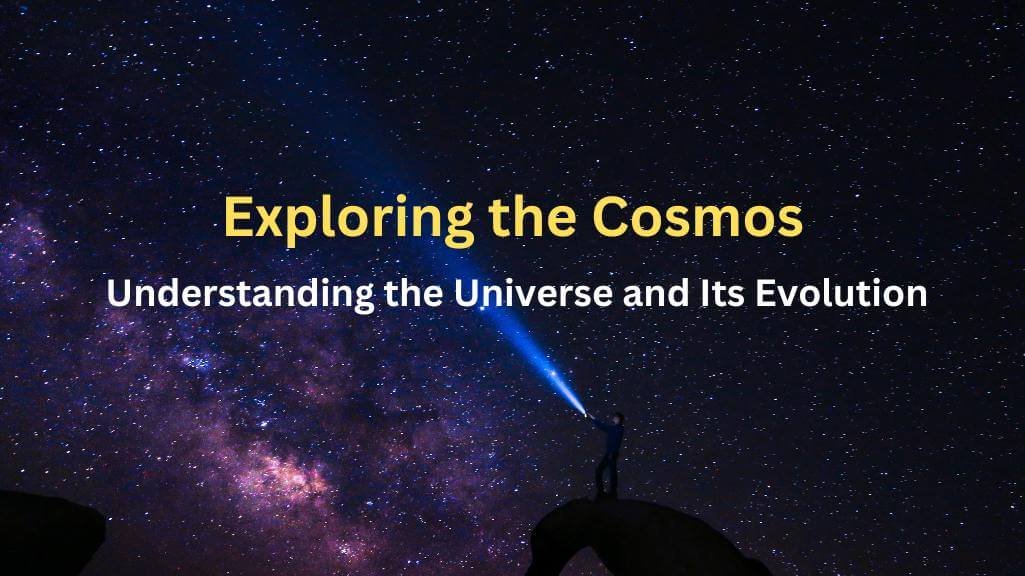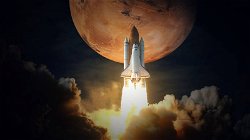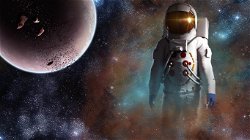Exploring the Cosmos: Understanding the Universe and Its Evolution
Aaron Alston
. 4 min read
The universe encompasses all that there is. It encompasses the entirety of space, as well as all of the matter and energy that can be found in space. Even the passage of time itself is a part of it, in addition to you, of course. Both Earth and the Moon are considered to be components of the universe, as are the other planets and all of the moons that orbit them. Planets, as well as asteroids and comets, orbit the Sun in a system called the solar system. There are hundreds of billions of stars in the Milky Way galaxy, and the majority of those stars have their own planets, which are referred to as exoplanets. The Sun is just one of those stars.

The Universe: Comprised of Billions of Galaxies
The Milky Way is just one of the billions of galaxies that can be seen in the universe, and it is believed that every single one of these galaxies, including our own, contains a supermassive black hole at their centers. The entire universe consists of everything from the stars in all of the galaxies to the other things that astronomers can't even observe directly. Learning about the motions of the planets, gravity, atomic theory, relativity, quantum mechanics, and the large-scale structure of the Universe can sometimes be used to lend credence to ideas of both order and chaos. This can happen when the information is presented in a way that is not easily understood.
The Nature of the Universe: Current Understanding and Future Discoveries
When it comes to this question, there is a great deal of ambiguity at the moment, and it is possible that future discoveries will assist in clarifying it. In the meantime, however, it is a good idea to take stock of what we've learned and what it can tell us about the life that we are familiar with. Today, the term "Universe" is what scientists mean when they talk about all of the space and matter that has ever existed. This includes the Milky Way, the Solar System, and all other galaxies and superstructures that are currently known. In the context of contemporary physics and astrophysics, it also refers to all of time and space, as well as matter and energy, as well as the fundamental forces that hold these things together.
The evolution of cosmology
The study of the beginning and development of the universe, from the moment of the Big Bang up until the present day and even further into the future, is known as cosmology. It is a subfield of astronomy. Over the course of human history, humanity's comprehension of the cosmos has undergone significant development. In the early days of astronomy, people believed that the Earth was the center of the universe, and that all other planets and stars revolved around it.
The Evolution of Our Understanding of the Cosmos
In the 16th century, the Polish scientist Nicolaus Copernicus suggested that Earth and the other planets in the solar system in fact orbited the sun, which caused a profound shift in the understanding of the cosmos. Copernicus was the father of the heliocentric model of the solar system. The turn of the 20th century brought about new discoveries that helped humans gain a better understanding of the expansive universe.
Einstein's Theory of Relativity
In his General Theory of Relativity, Albert Einstein advanced the idea that space and time could be unified into a single continuum. At the beginning of the 20th century, scientists were debating whether or not the Milky Way was simply one of many collections of stars, or whether or not it contained the entirety of the universe within its span.
Position of the Earth within the Solar System
First things first: the Milky Way galaxy belongs to the Virgo Supercluster of other galaxies in the universe. A group of galaxies that are held together by gravity is called a supercluster. The name of the smaller group of galaxies that we are a part of within this larger supercluster is the Local Group. The Milky Way, which is the name of the galaxy in which Earth is located, is the second largest galaxy in the Local Group.
The Milky Way and Its Dwarf Galaxy Companions
After a period of billions of years, our solar system began to form inside of this disk. As a result, when we look up into the night sky, we see what appears to be milk spilled across the cosmos; this is actually an edge-on view of the disk.Even though the Milky Way has had a peaceful history in recent eons, there are still new stars that are constantly being added to it. The Large and Small Magellanic Clouds are a pair of dwarf galaxies that can be seen with the naked eye by astronomers observing the night sky in the Southern Hemisphere. For a long time, astronomers thought that the pair of objects were our constant orbiting companions, similar to moons of the Milky Way.
The Mystery of Dark Matter: The Invisible Substance Holding Galaxies Together
Galaxies in our universe appear to be accomplishing something that is physically impossible. They are spinning at such a high rate that the gravity produced by their observable matter is incapable of holding them together; they ought to have torn themselves apart a long time ago. The same thing holds true for galaxies that are grouped together, which leads scientists to believe that there is a force at work that we cannot see. They believe that something that we have not yet been able to directly detect is giving these galaxies additional mass, thereby generating the additional gravity that they require to maintain their integrity. Due to the fact that it cannot be seen, this strange and unidentified substance is referred to as "dark matter."
Exploring the Mysterious Dark Matter of the Universe
Another mystery makes up the next largest portion of the budget for the universe and it's called dark matter. About 85 percent of all the material that we are aware of because we can observe its gravitational effects is made up of dark matter, which does not produce any light and is fundamentally distinct from the material that can be found in planets and stars. The remaining 4% of the universe is made up of everything that humans and other sentient beings are able to observe using instruments such as telescopes. This encompasses all of the gas and dust in intergalactic and interstellar space, as well as stars, planets, and living things.
More Stories from
Recent Developments in Space Exploration: Discoveries and Missions
The article highlights recent developments in the field of space exploration, including the discovery of the largest comet.
Artificial Intelligence plays in Assisting Humanity's Exploration of the Solar System
This article discusses the growing importance of artificial intelligence in various aspects of space exploration, including autonomous navigation.
Exploring the Final Frontier: A Glimpse into the World of Space Research
From probing distant galaxies with space telescopes to charting the potential for human life on other planets, this article provides a glimpse into the evolving field of space research.
Connected Cosmos: Embracing the Future of Space Exploration with Video Chat
Discover the potential for human colonization of other planets, breakthrough propulsion systems, and the expansion of our knowledge of the universe through space-based astronomy.
Chandrayaan-3: India's Ambitious Lunar Mission for Scientific Exploration
Chandrayaan-3, India's third lunar mission led by ISRO, aims to overcome past challenges and demonstrate soft landing capabilities on the Moon.








.png?width=40&aspect_ratio=1:1)


